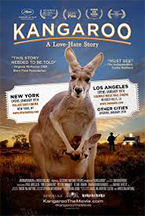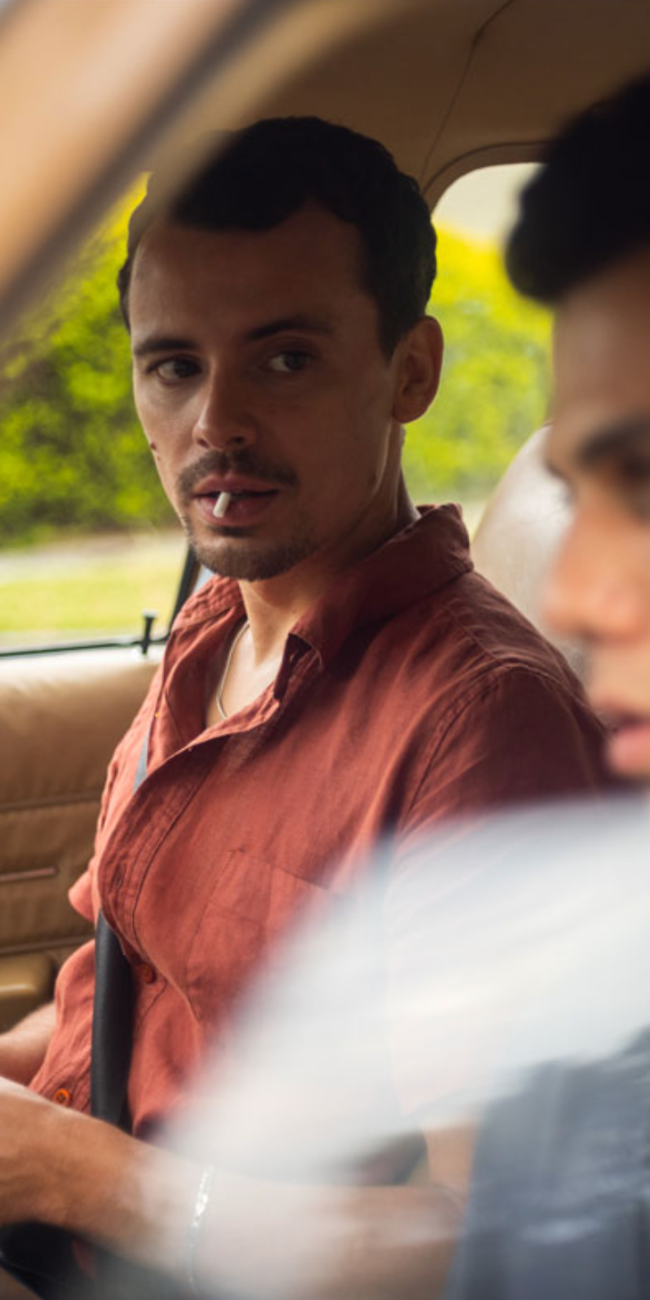KANGAROO: A LOVE-HATE STORY

(Kate McIntyre Clere and Mick McIntyre’s documentary Kangaroo: A Love-Hate Story is hitting theaters this week in limited release after a successful film festival run)
I have never traveled to Australia, but have always assumed that the kangaroo – that hopping marsupial of varied sizes – was a beloved icon. True, I had heard reports, from friends who had been “Down Under,” of roads littered with carcasses of kangaroos and their smaller, wallaby cousins, but given what I have seen in my own jaunts across the good old US of A – from dead deer to raccoons to foxes and a variety of domestic creatures, too – I figured this was just the price of living with cars. We kill things, we humans, and not always on purpose.
According to Kangaroo: A Love-Hate Story, a searing, heartfelt new documentary from co-directors Kate McIntyre Clere (Yogawoman) and Mick McIntyre (Aussie Rules the World), however, kangaroos and their faunal kin are anything but treasured in their native land. Though used as sports-team mascots and business logos, the speedy jumpers are apparently seen as a nuisance by much of the rural population, who believe that their grazing interferes with that of cows and sheep, Australia’s money-making livestock. The fact that modern scientific evidence proves that this may be far from accurate is not enough to dissuade farmers from hiring teams of “kangaroo shooters,” who roam the fields and forests at night, shooting tens – if not hundreds, if not thousands – of their prey at a time.
In addition to such government-sanctioned culling, there is also a widespread – also government-sanctioned – market in kangaroo leather and meat. What’s the big deal, one may ask? Animals are animals, and people are people, and we have long hunted and killed at will. Yes, but when we kill domestic livestock, there are rules and regulations, specifying that the slaughter be humane, as well as sanitary. In the farming communities and desert outback of the Australian continent, there is no one to monitor that such conditions are met for the kangaroo hunt, and as we discover, there is abuse of both. Kill shots to the head are routinely missed, leaving animals to bleed out for hours as they hop, in pain, away, and carcasses left in the sun for long hours results in meat teeming with bacteria. It’s all incredibly cruel, sordid and repulsive.
What makes Kangaroo: A Love-Hate Story at times very hard to watch is that we see all of this in graphic detail. Not everyone in the country is on board with the hunts, and some brave souls work to expose the truth. As a result, we see plenty of clips of kangaroos shot in the head (or not), and joeys (as the young are called) pulled out of their dead mother’s pouches and smashed on the side of trucks or rocks. Not pretty. Beyond this gruesome footage, the movie takes us on a journey through the history of white settlement in Australia and subsequent conflicts between farmers and local wildlife, the source of today’s mass killings. As one talking-head interviewee says, speaking of the legacy of colonization, the early settlers believed that “if it moves, shoot it; if it doesn’t, cut it down.”
What is especially worrisome is that the formulae that officials use to assess the viability of current kangaroo populations – and thereby to decide a figure of how many can be killed per year – may not be accurate, and so the animals could be in far more dire shape than most Aussies believe. The vast majority of folks (especially of the urban variety) have no animus towards the ‘roo, and assume that their leaders know what they’re doing. This movie tells us to beware and to be afraid, lest these magnificent creatures go the way of the Dodo.
– Christopher Llewellyn Reed (@ChrisReedFilm)











